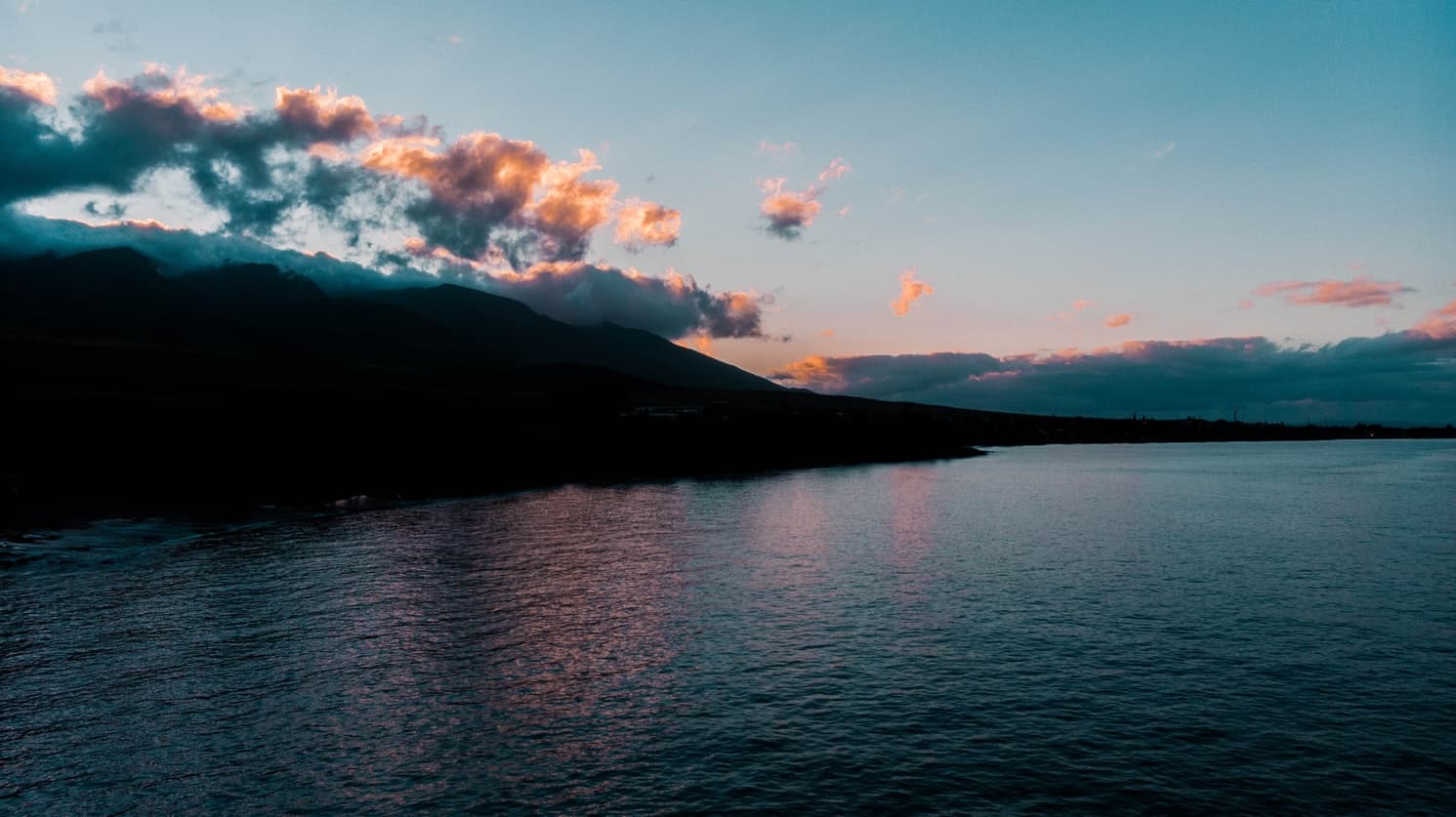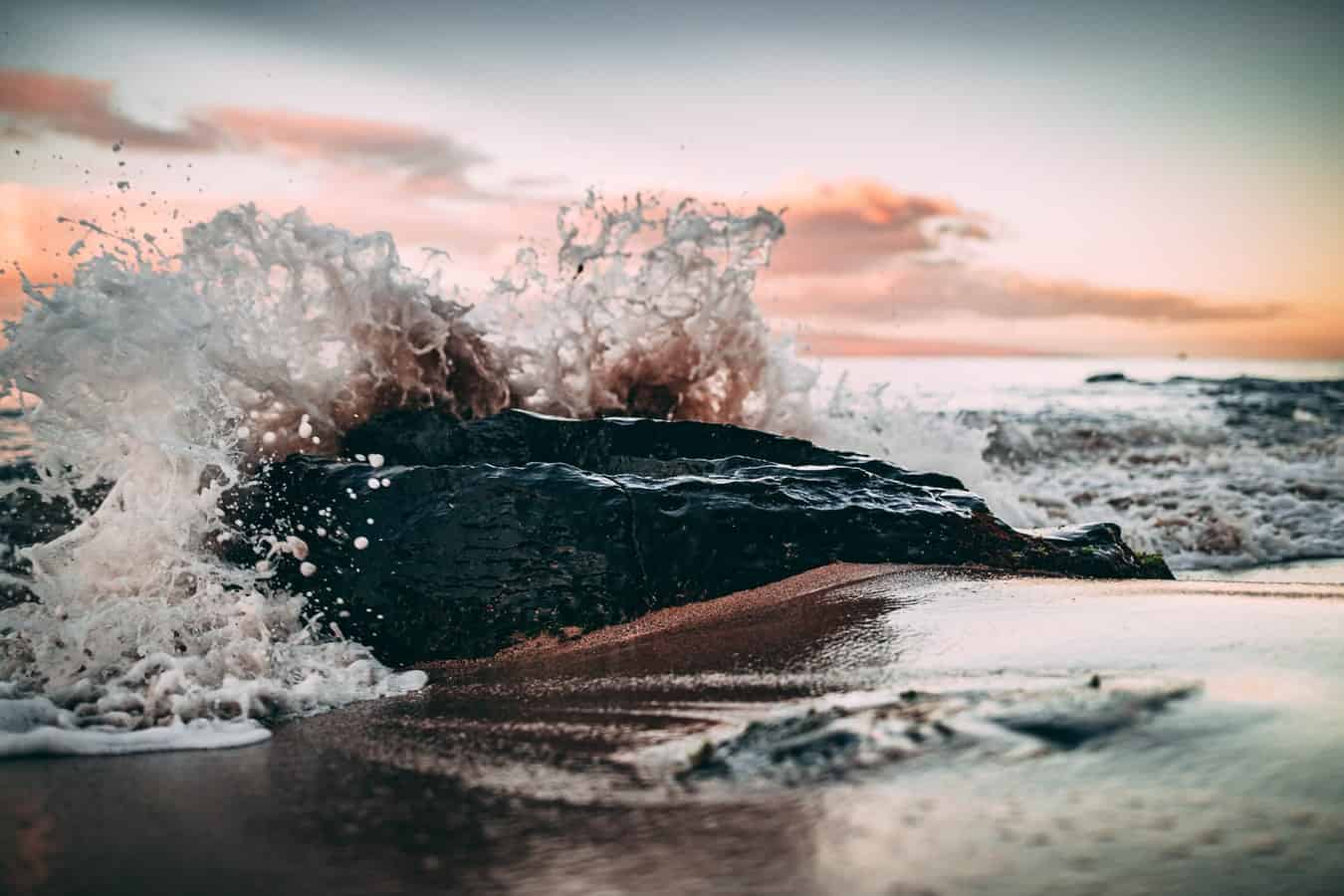As the sun peers over the horizon, it’s just you in the water holding a steady wave. Crowds of people gradually appear inland, and you wonder, did I wake up too early?
Is it better to surf in the morning? Surfing in the morning has been regarded as a better time to surf providing optimal surf conditions with clearer beaches and less wind.
If you’re up to the challenge of doing a little dawn patrol, calm wind and empty waters will reward your early rise. Early in the day, the temperature of the land and water is relatively equal to each other creating optimal surf conditions while the wind blows away from the shore. This occurs before sunrise and late at night. The type of wind generated in the morning matters because often times, if winds are too strong, then the surface of the wave gets smaller due to wind pushing against the wave walls.
Later in the day, the sand heats up while the ocean stays nice and cool. The wind builds from opposing air pressure and causes wave periods to diminish. The water then becomes choppy and harder to surf. Wind is not necessarily a bad thing, after all it’s what creates surf, but the amount of energy accumulated from the wind will determine its sustainability. If enough energy is produced, then the water will produce a swell, which can travel for long periods of time without decreasing in size.
Not many want to wake up at 4 am, but consider not having to wait your turn on a crowded beach. Most surfers prefer mornings and consider it a ritual to get their day started. As the hours pass, the beach becomes crowded with other surfers and beachgoers, which can make it hard to paddle out. The sun can be draining requiring more breaks to hydrate and sun protection.
What is the Best Time of Day To Surf?
You can check your local weather for sunrise information or simply go to your phone’s weather application. The time varies from location, but generally, twilight is around 6 am. Keep in mind, the safest time to surf is before 10 am because of the sun’s ultraviolet rays. Don’t feel discouraged if there isn’t a huge swell. Check other surf spots. Location and environmental factors play a massive part in the size and power of the wave. Throughout the day, the waves get choppy due to a difference in air pressure from water and land.
What If I Can’t Surf in the Morning?
Understandably, not everyone can plan an early morning surf session, so what’s the alternative? Just like the boiling pot mentioned earlier, once the sun begins to set, high winds settle down. The shore cools off by emitting heat back into space, and the process reverses. The water temperature is warmer than land, which creates favorable wind. Like a pot cooling, so does the Earth. Generally speaking, beachgoers are packing up for the day, leaving a clear path for you to wind down for an evening of wave catching.
If you choose to surf at night, take precautions. Make sure there is plenty of artificial light available to see incoming dangers such as sharks. Surfing near a pier can provide some light if your session goes longer than planned, and you don’t have the proper lighting. Be aware of other night surfers. In any instance, you should respect fellow surfers who have priority over a wave. There is always the perfect one lined up. Also, abide by your local laws when it comes to beach closures.
Surf Forecast
Apart from driving to your local beach and testing out the waves, there are various ways to plan your next surf day. Websites such as surf-forecast and swellinfo, are free websites with future forecasting. Surfline is another great forecasting website that provides a free two-day forecast and offers a 17-day forecast with a premium subscription. A quick google search can set you up with various other sources for easy to access surf forecasts. If you need quick tips on how read the forecast, there are a few websites such as Magic Seaweed, that provide in depth information on show to read well periods, and direction.

Favorable Surf Conditions
What is considered favorable? There are a few basic conditions required to create a surfable wave. More than just a rolling wave, you ask? It’s not impossible to grab your board and paddle out on any wave that comes to you but to land an epic wave there are a few things to watch out for:
• Little to no wind gust
• Tidal cycle
• Offshore wind
• Swell Direction
• Wave height
Wind Gusts
The surf report said there would be six-foot offshore swells. Just like a strong offshore wind, gusts can make miserable surfing conditions. Factor in wind gusts, and it went from excellent to undesirable. Wind gusts usually don’t cause any issues with surf conditions if its low. According to Magic Seaweed, “A 9mph gusting to 18mph wind will make for very confused and difficult conditions.”
The Tide
There is no correct tide to surf, but it’s important to know what it is. According to the Merriam- Webster it’s defined as “the alternate rising and falling of the surface of the ocean and of water bodies (such as gulfs and bays) connected with the ocean that occurs usually twice a day and is the result of differing gravitational forces exerted at different parts of the earth by another body (such as the moon or sun).” This rise and fall usually take place in twelve-hour and twenty-five minutes intervals.
The morning tide gets pushed back about fifty minutes or so, in conjunction with the moon rising fifty minutes later each day. These factors also change the time of day, both high and low tide occurs. So, when you arrive at the beach, glance at the tide, is it rising or falling? This will help you gauge how strong the waves will be.
Offshore Wind
Have you ever wondered why the water looks like glass early in the daytime? Offshore winds occur early in the morning when the air is nice and cool. The wind flow smooths out waves, and just as they roll toward the shore, the wave holds shape, and the wind will helps delay wave break. It’s crucial for surfers to get their spot in the line-up early on, so they don’t miss out on the morning offshore winds.
Swell Direction
A swell explained by Sciencing.com: “Over time and distance, sustained wind strength and duration build up a large amount of energy beneath the ocean’s surface, forming deeper waves known as swells. This energy fuels a swell so it can travel thousands of miles without changes in height or shape.” Despite local winds, these types of waves travel longer. They are determined by height, period, and direction. Surfers rely on the direction of a swell to find the perfect place to set up. The direction of the swell must direct to the beach. If a forecast predicts the swell will be far off the coast, it’s more than likely there will be no surf.
Wave Height
Waves come in various sizes. To find the right wave depends on how comfortable you are in the water. They range from small to epic, being less than one foot up to over twenty-five feet. Unless you are an expert wave rider, scoping out waves five times overhead might seem ambitious. On your surf forecast of choice, they provide local wave heights at multiple locations; this way, you can hit the waves with little chance of striking out.
Wake Up! It’s Time to Surf.
Now that you know the morning is the best time to surf, it’s time to get out there. There is so much that can benefit you from this early morning expedition.
Daily dose of vitamin D
• Watch the sun rise
• Be the first in the surf line-up
• Take advantage of early morning offshore winds
• Take part in your local surf community
How Surfing Affects Your Vitamin D Levels
The sun’s rays aren’t on full blast first thing in the morning, but you could still benefit from the exposure. Vitamin D is vital for bone health, and you need healthy bones to surf.
The Line-Up Is Less Crowded
No more congested beaches. You are there, in the water, riding a wave you would have otherwise missed. Not saying you have some right to every wave that moves toward you, but it does feel nice having dibs on any wave at your spot.
Community
If all else fails and there is no wave to be found, you can be an active member of your surf community. Take advantage of the morning by cleaning up the beach. Fellow beachgoers will appreciate a cleaner beach, and it feels nice helping the environment. If you see a beginner surfer, give them a few pointers so they can share in the experience. You might run into some local people you’ve never seen at the beach. It’s good to connect with fellow surfers to learn about secret spots and future meetups.

